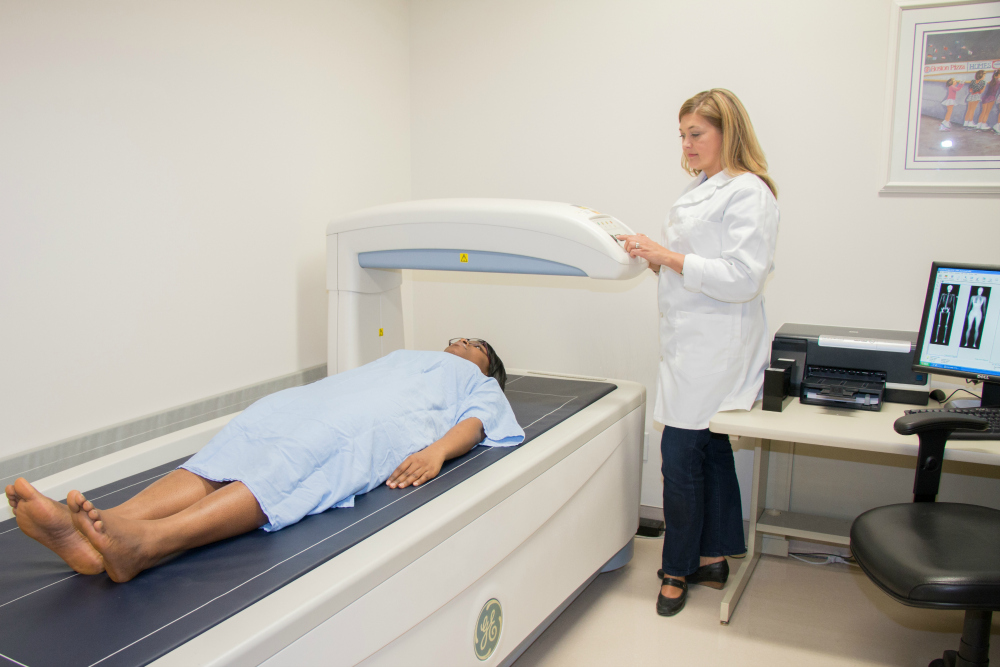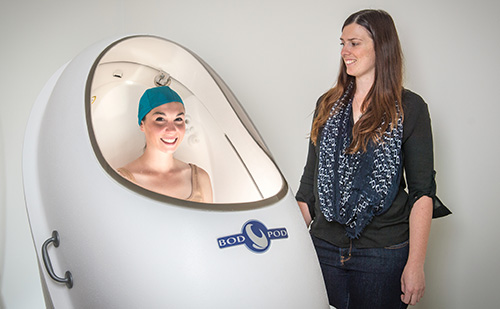Body Composition Assessment Techniques
The maintenance of a health body weight and level of body fatness are key components in maintaining health and promoting longevity. Directly measuring body fat instead of using indirect methods such as body mass index (BMI) allows for a more accurate estimate for risk of disease including coronary heart disease, type 2 diabetes, and cancer.
Dual X-Ray Absorptiometry (DXA)
DXA provides precise measurement of bone density, lean tissue mass, and total regional body fat. It is currently the gold standard in body composition assessment. This test is non-invasive, painless, and completed in approximately 15 minutes. The DXA in the HNRU is a General Electric LUNAR Prodigy High Speed Digital Fan Beam X-Ray-Based Bone Densitometer. The DXA uses very low dose x-rays or two different levels to distinguish between bone and soft tissue. The amount of radiation an individual is exposed to during a DXA scan is equivalent to that of a cross country flight.

Airdisplacement Plethysmography (BodPod)
The BodPod utilizes whole body densiometric principles to determine fat mass and fat free mass in adults and children. When an individual is inside the unit, the amount of air they displaced is measured in order to break body composition down into two compartments: fat mass and fat free mass. Measurement time is short (5-10 minutes), non-invasive and accommodates a wide range of body sizes (individuals 50-440 lbs). This technique is also suitable for populations which are not permitted to receive x-ray exposure (children and pregnant women), and is suitable for repeated measures.

Bioelectrical Impedance Analysis (BIA)
Body composition is estimated using BIA by the passage of an electrical current through the body. BIA measures the impedance or resistance to the electrical signal as it travels through water in muscle and fat. This test takes less than five minutes to complete and the electrical current used is not felt by the individual undergoing the test. Results of BIA can be influenced by hydration status, and are less accurate in individuals who have an atypical body shape.
Total Body Potassium Counter
The HNRU has recently acquired a Mirion Accuscan Bed with one sodium iodide scintillation detector that will be used to measure total body potassium (TBK). Gamma rays emitted from potassium that is naturally occurring in the body can be used to determine body cell mass (BCM), which is the functional, metabolically active tissue of the body. BCM is an indicator of nutritional status and can change with alterations in dietary intake, physical activity, age, and disease progression.
Ultrasound
Ultrasound is a portable, non-invasive method of measuring adipose tissue and muscle thickness. This method relies on the reflection of ultrasound waves from tissue in the path of where the beam is applied. Gel is applied to the site that is to be measured and a transducer is then moved over the area of interest.
